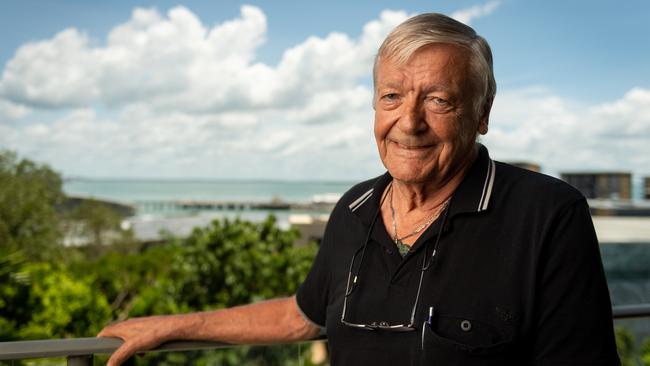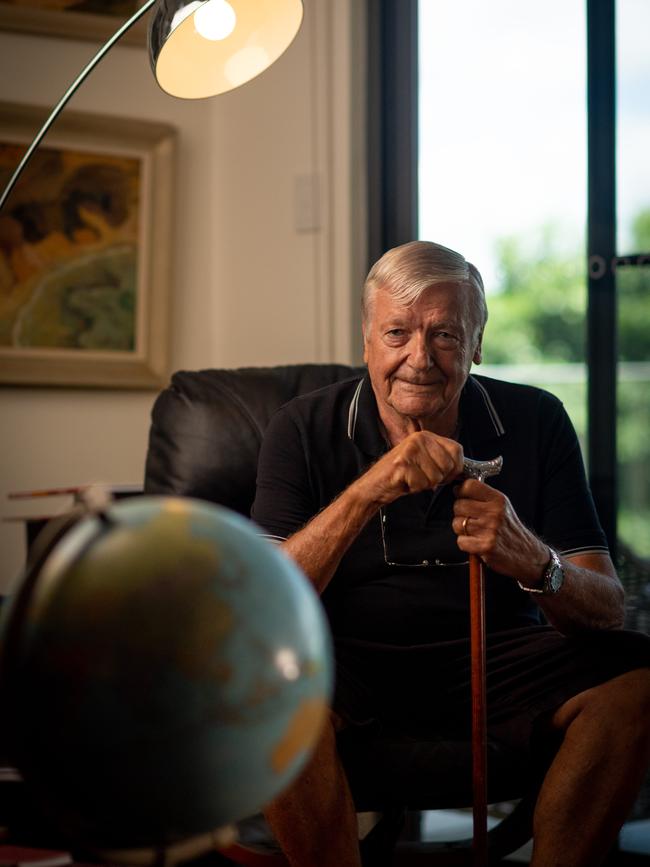‘It never leaves you’: Darwin’s only pathologist during Cyclone Tracy shares his story for the first time
AFTER being tasked with the unimaginable job of identifying those who died in Cyclone Tracy, Jurgen Rode still clearly remembers Christmas of 1974. He shares his story publicly for the first time with the NT News.

Northern Territory
Don't miss out on the headlines from Northern Territory. Followed categories will be added to My News.
AFTER being tasked with the unimaginable job of identifying those who died in Cyclone Tracy, Jurgen Rode still clearly remembers Christmas of 1974.
The sole pathologist working at the Royal Darwin Hospital during one of the most devastating natural disasters in Australia’s history, Dr Rode has shared his story publicly for the first time with the NT News.
Cyclone Tracy left 71 people dead and 80 per cent of Darwin destroyed. Wind gusts reached 217km/h before destroying the Bureau of Meteorology’s equipment.
“You can’t imagine the noise, it was the most frightening noise,” Dr Rode said.
Despite the destruction of their pathology lab by the cyclone, Dr Rode said he and his staff worked in an undamaged hospital room to assist the injured using blood bags found in the rubble of the Red Cross building and a generator at a local petrol station.
Then he began the grim task of collecting and identifying the dead.
“People brought in their dead and then were evacuated,” he said.

MORE TOP NEWS
NT police rescue trio in broken down boat with no safety gear on board
Massive 4.5m croc caught near Daly River community
He was assisted in this role by Detective Sergeant Alex Carolan, who had arrived in Darwin only the night before.
The pair opened temporary morgues and photographed the dead, in the hope they would be eventually identified.
A lack of refrigeration meant many of the bodies had to be buried almost immediately, but Dr Rode said he refused to see them buried in a mass grave.
“I told them, ‘Everyone gets a marked grave and everyone gets a funeral’,” he said.
Dr Rode gathered and identified bodies for four days with little to no sleep.
“I was exhausted and practically hallucinating,” he said.
“I slept for two days (after)”.
Because of his efforts, all the bodies he buried were eventually identified.
Despite the passage of time, Cyclone Tracy remains part of Dr Rode.
“It never leaves you, I think about it every Christmas,” he said.
“I sometimes go down to the cemetery and look at the graves.”
NT NEWS sizzling new deal: Get all your news for just $5 a month
Dr Rode now displays several pictures of Cyclone Tracy’s aftermath in his apartment.
“I put those photos up there to remind me nothing really matters,” he said.
“Having survived that matters.”


